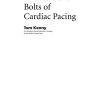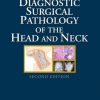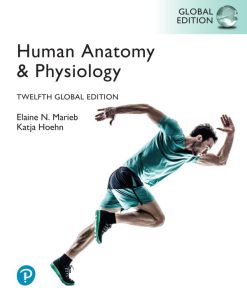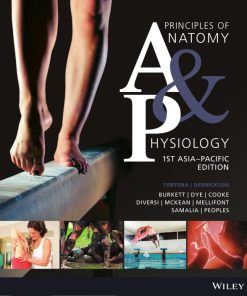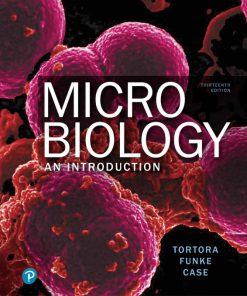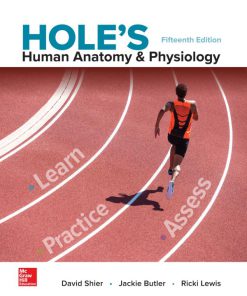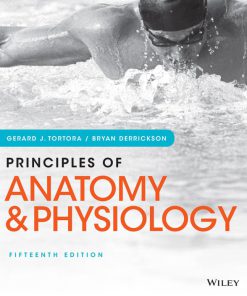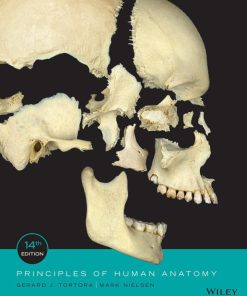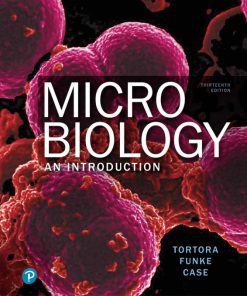Principles of Anatomy and Physiology Set 15th Global Edition by Gerard Tortora, Bryan Derrickson ISBN 9781119320647 111932064X
$50.00 Original price was: $50.00.$25.00Current price is: $25.00.
Authors:Gerard J. Tortora , Series:Anatomy [249] , Tags:Science; Life Sciences; General; Biology; Physiology , Author sort:Tortora, Gerard J. , Ids:9781119400066 , Languages:Languages:eng , Published:Published:Apr 2017 , Publisher:Wiley , Comments:Comments:The phenomenally successful Principles of Anatomy and Physiology continues to set the discipline standard with the 15th edition. Designed for the 2-semester anatomy and physiology course, Principles of Anatomy and Physiology combines exceptional content and outstanding visuals for a rich and comprehensive classroom experience. Enhanced for a digital delivery, the 15th edition, gives students the ability to learn and explore anatomy and physiology both inside and outside of the classroom.
Principles of Anatomy and Physiology Set 15th Global Edition by Gerard Tortora, Bryan Derrickson – Ebook PDF Instant Download/Delivery. 9781119320647 ,111932064X
Full download Principles of Anatomy and Physiology Set 15th Global Edition after payment

Product details:
ISBN 10: 111932064X
ISBN 13: 9781119320647
Author: Gerard Tortora, Bryan Derrickson
The phenomenally successful Principles of Anatomy and Physiology continues to set the discipline standard with the 15th edition. Designed for the 2-semester anatomy and physiology course, Principles of Anatomy and Physiology combines exceptional content and outstanding visuals for a rich and comprehensive classroom experience. Enhanced for a digital delivery, the 15th edition, gives students the ability to learn and explore anatomy and physiology both inside and outside of the classroom.
Principles of Anatomy and Physiology Set 15th Global Edition Table of contents:
1 An Introduction to the Human Body
1.1 Anatomy and Physiology Defined
1.2 Levels of Structural Organization and Body Systems
1.3 Characteristics of the Living Human Organism
1.4 Homeostasis
1.5 Basic Anatomical Terminology
1.6 Aging and Homeostasis
1.7 Medical Imaging
2 The Chemical Level of Organization
2.1 How Matter Is Organized
2.2 Chemical Bonds
2.3 Chemical Reactions
2.4 Inorganic Compounds and Solutions
2.5 Overview of Organic Compounds
2.6 Carbohydrates
2.7 Lipids
2.8 Proteins
2.9 Nucleic Acids
2.10 Adenosine Triphosphate
3 The Cellular Level of Organization
3.1 Parts of a Cell
3.2 The Plasma Membrane
3.3 Transport across the Plasma Membrane
3.4 Cytoplasm
3.5 Nucleus
3.6 Protein Synthesis
3.7 Cell Division
3.8 Cellular Diversity
3.9 Aging and Cells
4 The Tissue Level of Organization
4.1 Types of Tissues
4.2 Cell Junctions
4.3 Comparison between Epithelial and Connective Tissues
4.4 Epithelial Tissue
4.5 Connective Tissue
4.6 Membranes
4.7 Muscular Tissue
4.8 Nervous Tissue
4.9 Excitable Cells
4.10 Tissue Repair: Restoring Homeostasis
4.11 Aging and Tissues
5 The Integumentary System
5.1 Structure of the Skin
5.2 Accessory Structures of the Skin
5.3 Types of Skin
5.4 Functions of the Skin
5.5 Maintaining Homeostasis: Skin Wound Healing
5.6 Development of the Integumentary System
5.7 Aging and the Integumentary System
6 The Skeletal System: Bone Tissue
6.1 Functions of Bone and the Skeletal System
6.2 Structure of Bone
6.3 Histology of Bone Tissue
6.4 Blood and Nerve Supply of Bone
6.5 Bone Formation
6.6 Fracture and Repair of Bone
6.7 Bone’s Role in Calcium Homeostasis
6.8 Exercise and Bone Tissue
6.9 Aging and Bone Tissue
7 The Skeletal System: The Axial Skeleton
7.1 Divisions of the Skeletal System
7.2 Types of Bones
7.3 Bone Surface Markings
7.4 Skull: An Overview
7.5 Cranial Bones
7.6 Facial Bones
7.7 Special Features of the Skull
7.8 Hyoid Bone
7.9 Vertebral Column
7.10 Vertebral Regions
7.11 Thorax
8 The Skeletal System: The Appendicular Skeleton
8.1 Pectoral (Shoulder) Girdle
8.2 Upper Limb (Extremity)
8.3 Pelvic (Hip) Girdle
8.4 False and True Pelves
8.5 Comparison of Female and Male Pelves
8.6 Lower Limb (Extremity)
8.7 Development of the Skeletal System
9 Joints
9.1 Joint Classifications
9.2 Fibrous Joints
9.3 Cartilaginous Joints
9.4 Synovial Joints
9.5 Types of Movements at Synovial Joints
9.6 Types of Synovial Joints
9.7 Factors Affecting Contact and Range of Motion at Synovial Joints
9.8 Selected Joints of the Body
9.9 Temporomandibular Joint
9.10 Shoulder Joint
9.11 Elbow Joint
9.12 Hip Joint
9.13 Knee Joint
9.14 Aging and Joints
9.15 Arthroplasty
10 Muscular Tissue
10.1 Overview of Muscular Tissue
10.2 Structure of Skeletal Muscle Tissue
10.3 Contraction and Relaxation of Skeletal Muscle Fibers
10.4 Muscle Metabolism
10.5 Control of Muscle Tension
10.6 Types of Skeletal Muscle Fibers
10.7 Exercise and Skeletal Muscle Tissue
10.8 Cardiac Muscle Tissue
10.9 Smooth Muscle Tissue
10.10 Regeneration of Muscular Tissue
10.11 Development of Muscle
10.12 Aging and Muscular Tissue
11 The Muscular System
11.1 How Skeletal Muscles Produce Movements
11.2 How Skeletal Muscles Are Named
11.3 Overview of the Principal Skeletal Muscles
11.4 Muscles of the Head That Produce Facial Expressions
11.5 Muscles of the Head That Move the Eyeballs (Extrinsic Eye Muscles) and Upper Eyelids
11.6 Muscles That Move the Mandible and Assist in Mastication and Speech
11.7 Muscles of the Head That Move the Tongue and Assist in Mastication and Speech
11.8 Muscles of the Anterior Neck That Assist in Deglutition and Speech
11.9 Muscles of the Neck That Move the Head
11.10 Muscles of the Abdomen That Protect Abdominal Viscera and Move the Vertebral Column
11.11 Muscles of the Thorax That Assist in Breathing
11.12 Muscles of the Pelvic Floor That Support the Pelvic Viscera and Function as Sphincters
11.13 Muscles of the Perineum
11.14 Muscles of the Thorax That Move the Pectoral Girdle
11.15 Muscles of the Thorax and Shoulder That Move the Humerus
11.16 Muscles of the Arm That Move the Radius and Ulna
11.17 Muscles of the Forearm That Move the Wrist, Hand, Thumb, and Digits
11.18 Muscles of the Palm That Move the Digits—Intrinsic Muscles of the Hand
11.19 Muscles of the Neck and Back That Move the Vertebral Column
11.20 Muscles of the Gluteal Region That Move the Femur
11.21 Muscles of the Thigh That Move the Femur, Tibia, and Fibula
11.22 Muscles of the Leg That Move the Foot and Toes
11.23 Intrinsic Muscles of the Foot That Move the Toes
12 Nervous Tissue
12.1 Overview of the Nervous System
12.2 Histology of Nervous Tissue
12.3 Electrical Signals in Neurons: An Overview
12.4 Resting Membrane Potential
12.5 Graded Potentials
12.6 Action Potentials
12.7 Signal Transmission at Synapses
12.8 Neurotransmitters
12.9 Neural Circuits
12.10 Regeneration and Repair of Nervous Tissue
13 The Spinal Cord and Spinal Nerves
13.1 Spinal Cord Anatomy
13.2 Spinal Nerves
13.3 Cervical Plexus
13.4 Brachial Plexus
13.5 Lumbar Plexus
13.6 Sacral and Coccygeal Plexuses
13.7 Spinal Cord Physiology
14 The Brain and Cranial Nerves
14.1 Brain Organization, Protection, and Blood Supply
14.2 Cerebrospinal Fluid
14.3 The Brainstem and Reticular Formation
14.4 The Cerebellum
14.5 The Diencephalon
14.6 The Cerebrum
14.7 Functional Organization of the Cerebral Cortex
14.8 Cranial Nerves: An Overview
14.9 Olfactory (I) Nerve
14.10 Optic (II) Nerve
14.11 Oculomotor (III), Trochlear (IV), and Abducens (VI) Nerves
14.12 Trigeminal (V) Nerve
14.13 Facial (VII) Nerve
14.14 Vestibulocochlear (VIII) Nerve
14.15 Glossopharyngeal (IX) Nerve
14.16 Vagus (X) Nerve
14.17 Accessory (XI) Nerve
14.18 Hypoglossal (XII) Nerve
14.19 Development of the Nervous System
14.20 Aging and the Nervous System
15 The Autonomic Nervous System
15.1 Comparison of Somatic and Autonomic Nervous Systems
15.2 Anatomy of Autonomic Motor Pathways
15.3 ANS Neurotransmitters and Receptors
15.4 Physiology of the ANS
15.5 Integration and Control of Autonomic Functions
16 Sensory, Motor, and Integrative Systems
16.1 Sensation
16.2 Somatic Sensations
16.3 Somatic Sensory Pathways
16.4 Control of Body Movement
16.5 Integrative Functions of the Cerebrum
17 The Special Senses
17.1 Olfaction: Sense of Smell
17.2 Gustation: Sense of Taste
17.3 Vision: An Overview
17.4 Accessory Structures of the Eye
17.5 Anatomy of the Eyeball
17.6 Physiology of Vision
17.7 Hearing
17.8 Equilibrium
17.9 Development of the Eyes and Ears
17.10 Aging and the Special Senses
18 The Endocrine System
18.1 Comparison of Control by the Nervous and Endocrine Systems
18.2 Endocrine Glands
18.3 Hormone Activity
18.4 Mechanisms of Hormone Action
18.5 Control of Hormone Secretion
18.6 Hypothalamus and Pituitary Gland
18.7 Thyroid Gland
18.8 Parathyroid Glands
18.9 Adrenal Glands
18.10 Pancreatic Islets
18.11 Ovaries and Testes
18.12 Pineal Gland and Thymus
18.13 Other Endocrine Tissues and Organs, Eicosanoids, and Growth Factors
18.14 The Stress Response
18.15 Development of the Endocrine System
18.16 Aging and the Endocrine System
19 The Cardiovascular System: The Blood
19.1 Functions and Properties of Blood
19.2 Formation of Blood Cells
19.3 Red Blood Cells
19.4 White Blood Cells
19.5 Platelets
19.6 Stem Cell Transplants from Bone Marrow and Cord Blood
19.7 Hemostasis
19.8 Blood Groups and Blood Types
20 The Cardiovascular System: The Heart
20.1 Anatomy of the Heart
20.2 Heart Valves and Circulation of Blood
20.3 Cardiac Muscle Tissue and the Cardiac Conduction System
20.4 The Cardiac Cycle
20.5 Cardiac Output
20.6 Exercise and the Heart
20.7 Help for Failing Hearts
20.8 Development of the Heart
21 The Cardiovascular System: Blood Vessels and Hemodynamics
21.1 Structure and Function of Blood Vessels
21.2 Capillary Exchange
21.3 Hemodynamics: Factors Affecting Blood Flow
21.4 Control of Blood Pressure and Blood Flow
21.5 Checking Circulation
21.6 Shock and Homeostasis
21.7 Circulatory Routes: Systemic Circulation
21.8 The Aorta and Its Branches
21.9 Ascending Aorta
21.10 The Arch of the Aorta
21.11 Thoracic Aorta
21.12 Abdominal Aorta
21.13 Arteries of the Pelvis and Lower Limbs
21.14 Veins of the Systemic Circulation
21.15 Veins of the Head and Neck
21.16 Veins of the Upper Limbs
21.17 Veins of the Thorax
21.18 Veins of the Abdomen and Pelvis
21.19 Veins of the Lower Limbs
21.20 Circulatory Routes: The Hepatic Portal Circulation
21.21 Circulatory Routes: The Pulmonary Circulation
21.22 Circulatory Routes: The Fetal Circulation
21.23 Development of Blood Vessels and Blood
21.24 Aging and the Cardiovascular System
22 The Lymphatic System and Immunity
22.1 The Concept of Immunity
22.2 Overview of the Lymphatic System
22.3 Lymphatic Vessels and Lymph Circulation
22.4 Lymphatic Organs and Tissues
22.5 Development of Lymphatic Tissues
22.6 Innate Immunity
22.7 Adaptive Immunity
22.8 Cell-Mediated Immunity
22.9 Antibody-Mediated Immunity
22.10 Self-Recognition and Self-Tolerance
22.11 Stress and Immunity
22.12 Aging and the Immune System
23 The Respiratory System
23.1 Overview of the Respiratory System
23.2 The Upper Respiratory System
23.3 The Lower Respiratory System
23.4 Pulmonary Ventilation
23.5 Lung Volumes and Capacities
23.6 Exchange of Oxygen and Carbon Dioxide
23.7 Transport of Oxygen and Carbon Dioxide
23.8 Control of Breathing
23.9 Exercise and the Respiratory System
23.10 Development of the Respiratory System
23.11 Aging and the Respiratory System
24 The Digestive System
24.1 Overview of the Digestive System
24.2 Layers of the GI Tract
24.3 Neural Innervation of the GI Tract
24.4 Peritoneum
24.5 Mouth
24.6 Pharynx
24.7 Esophagus
24.8 Deglutition
24.9 Stomach
24.10 Pancreas
24.11 Liver and Gallbladder
24.12 Small Intestine
24.13 Large Intestine
24.14 Phases of Digestion
24.15 Development of the Digestive System
24.16 Aging and the Digestive System
25 Metabolism and Nutrition
25.1 Metabolic Reactions
25.2 Energy Transfer
25.3 Carbohydrate Metabolism
25.4 Lipid Metabolism
25.5 Protein Metabolism
25.6 Key Molecules at Metabolic Crossroads
25.7 Metabolic Adaptations
25.8 Energy Balance
25.9 Regulation of Body Temperature
25.10 Nutrition
26 The Urinary System
26.1 Overview of the Urinary System
26.2 Anatomy of the Kidneys
26.3 The Nephron
26.4 Overview of Renal Physiology
26.5 Glomerular Filtration
26.6 Tubular Reabsorption and Tubular Secretion
26.7 Production of Dilute and Concentrated Urine
26.8 Evaluation of Kidney Function
26.9 Urine Transportation, Storage, and Elimination
26.10 Waste Management in Other Body Systems
26.11 Development of the Urinary System
26.12 Aging and the Urinary System
27 Fluid, Electrolyte, and Acid–Base Homeostasis
27.1 Fluid Compartments and Fluid Homeostasis
27.2 Electrolytes in Body Fluids
27.3 Acid–Base Balance
27.4 Aging and Fluid, Electrolyte, and Acid–Base Homeostasis
28 The Reproductive Systems
28.1 Male Reproductive System
28.2 Female Reproductive System
28.3 The Female Reproductive Cycle
28.4 The Human Sexual Response
28.5 Birth Control Methods and Abortion
28.6 Development of the Reproductive Systems
28.7 Aging and the Reproductive Systems
29 Development and Inheritance
29.1 Overview of Development
29.2 The First Two Weeks of the Embryonic Period
29.3 The Remaining Weeks of the Embryonic Period
29.4 Fetal Period
29.5 Teratogens
29.6 Prenatal Diagnostic Tests
29.7 Maternal Changes during Pregnancy
29.8 Exercise and Pregnancy
29.9 Labor
29.10 Adjustments of the Infant at Birth
29.11 The Physiology of Lactation
29.12 Inheritance
Appendix A Measurements
Appendix B Periodic Table
Appendix C Normal Values for Selected Blood Tests
Appendix D Normal Values for Selected Urine Tests
Appendix E Answers to Critical Thinking Questions
Index
People also search for Principles of Anatomy and Physiology Set 15th Global Edition:
principles of anatomy and physiology 11th edition
principles of anatomy and physiology class
what are the 5 basic principles of anatomy and physiology
principles of anatomy and physiology


